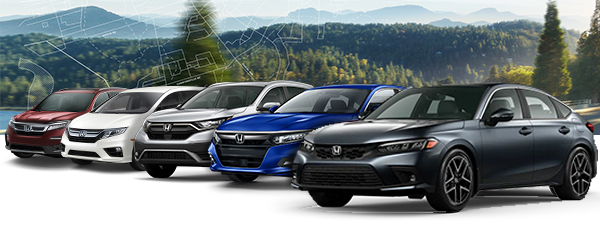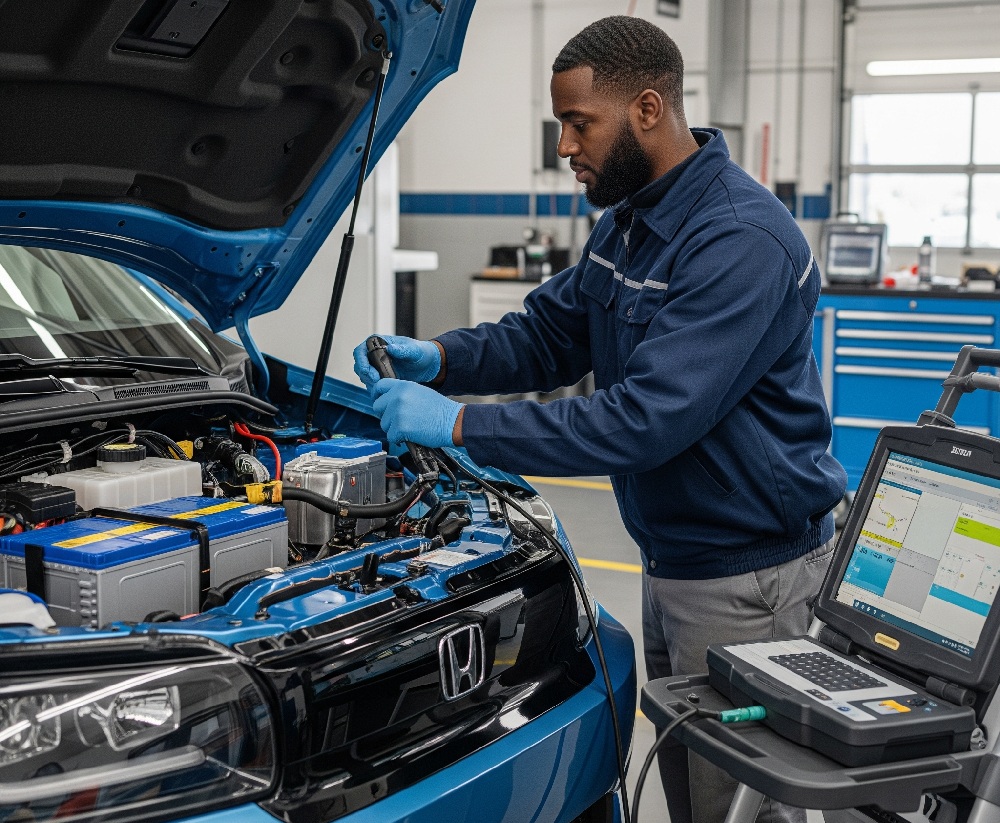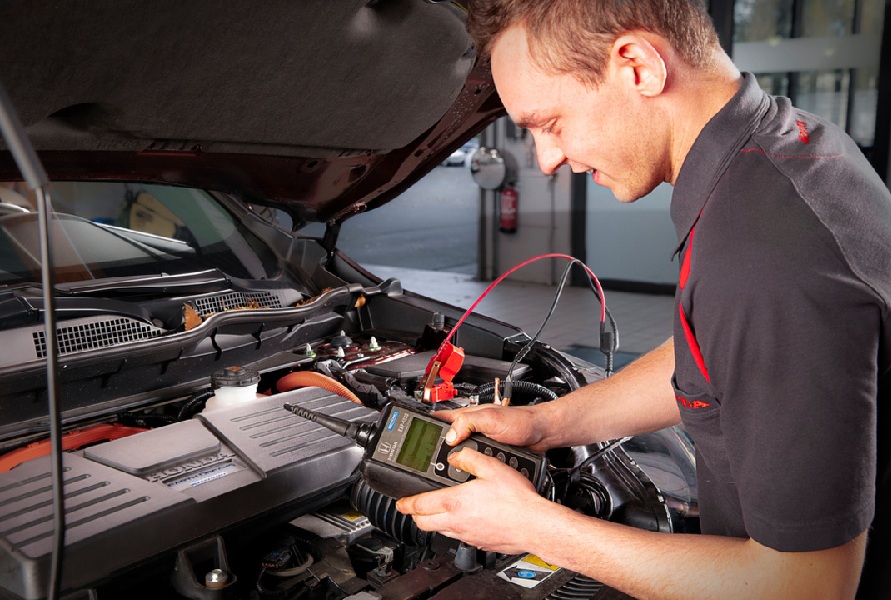The automotive industry is constantly evolving, with manufacturers pushing the boundaries of technology to create more efficient, environmentally friendly vehicles. In this landscape, the Honda Civic emerges as a game-changer, setting new standards for fuel efficiency in the compact car segment. Let’s explore how Honda has redefined fuel efficiency with its latest Civic model, exploring this innovative vehicle’s technological advancements, performance metrics, and environmental impact.

A New Era of Hybrid Technology
At the heart of the impressive fuel efficiency of the Honda Civic is its advanced hybrid powertrain. Honda has leveraged years of experience in hybrid technology to create a system that maximizes fuel economy and delivers a driving experience that doesn’t compromise performance.
The Two-Motor Hybrid System
The Civic Hybrid employs Honda’s renowned two-motor hybrid system. The system consists of:
- A 2.0-liter Atkinson cycle inline-4 gasoline engine
- Two electric motors
- A lithium-ion battery pack
This configuration allows for seamless transitions between electric-only, hybrid, and gasoline-only operation, optimizing efficiency in various driving conditions. The system’s total output is an impressive 200 horsepower and 232 lb-ft of torque, making it the most powerful non-Type R Civic ever produced.
Efficiency Metrics That Impress
The fuel economy ratings for the Honda Civic Hybrid are nothing short of remarkable:
- City: 4.7 L/100 km
- Highway: 5.0 L/100 km
- Combined: 4.8 L/100 km
These figures represent a significant improvement over the previous generation Civic and put the new model in direct competition with dedicated hybrid vehicles like the Toyota Prius.
Performance Meets Efficiency
One of the most impressive aspects of the Honda Civic Hybrid is how it blends fuel efficiency with engaging performance. Honda has successfully addressed the common criticism that hybrid vehicles lack driving excitement.
Acceleration and Handling
Despite its focus on efficiency, the Civic Hybrid doesn’t slouch in the performance department:
- 0-97 km/h acceleration: Quicker than the Civic Si
- Top speed: Electronically limited to 124 mph (200 km/h)
The instant torque delivery from the electric motors provides a responsive and lively feel, especially in urban driving scenarios. Honda has also fine-tuned the suspension and steering to maintain the Civic reputation for agile handling, ensuring that efficiency doesn’t come at the cost of driving pleasure.
Linear Shift Control
To enhance the driving experience further, Honda has implemented a Linear Shift Control system. This innovative feature mimics the feel of a conventional transmission, providing a more natural acceleration sensation that many drivers prefer. It’s a small but significant detail that makes the transition to hybrid driving more intuitive for those accustomed to traditional powertrains.
Aerodynamics and Weight Management
Honda’s engineers have paid close attention to the aerodynamics and weight, two crucial factors in achieving optimal fuel efficiency.
Streamlined Design
The Civic features a sleek, aerodynamic profile that reduces drag and improves fuel economy. Key design elements include:
- A low, wide stance
- Smooth underbody panels
- Active grille shutters that close at higher speeds to reduce air resistance
These features work together to help the Civic slice through the air more efficiently, reducing the energy required to maintain highway speeds.
Lightweight Construction
Despite the addition of hybrid components, Honda has managed to keep the weight of the Civic in check through the use of lightweight materials and clever engineering:
- High-strength steel in the body structure
- Aluminum hood and some suspension components
- Optimized hybrid battery placement for better weight distribution
The result is a vehicle that weighs only about 288 pounds (131 kg) more than the non-hybrid Civic Si, a remarkable achievement considering the added hybrid technology.
Advanced Energy Management
The Honda Civic Hybrid incorporates several advanced features to maximize energy efficiency and recovery.
Regenerative Braking System
The regenerative braking system captures more kinetic energy during deceleration and braking. This energy is then converted to electricity and stored in the battery for later use. The system offers four levels of regenerative braking, controlled via steering wheel-mounted paddle shifters, allowing drivers to tailor the level of energy recovery to their preferences and driving conditions.
Intelligent Power Unit (IPU)
The Intelligent Power Unit manages the flow of electricity between the battery, electric motors, and various vehicle systems. It constantly analyzes driving conditions and power demands to optimize the use of electric and gasoline power, ensuring maximum efficiency at all times.
Drive Mode Selection
The Civic Hybrid offers multiple drive modes to suit different driving situations and preferences:
- ECON: Maximizes fuel efficiency by adjusting throttle response and climate control operation
- Normal: Balances performance and efficiency for everyday driving
- Sport: Sharpens throttle response and adjusts the hybrid system for more dynamic performance
- EV: Allows for short distances of all-electric driving at low speeds
These modes allow drivers to prioritize efficiency or performance as needed, enhancing the versatility of the Civic.
Environmental Impact and Sustainability
The Honda Civic Hybrid’s impressive fuel efficiency translates directly into reduced environmental impact, aligning with Honda’s broader sustainability goals.
Emissions Reduction
Compared to its non-hybrid counterparts, the Civic Hybrid significantly reduces CO2 emissions:
- Approximately 30% lower CO2 emissions than the base Civic model
- Meets or exceeds the most stringent emissions standards worldwide
This reduction in emissions plays a crucial role in Honda’s efforts to minimize its environmental footprint and combat climate change.
Sustainable Materials
Honda has also focused on sustainability in the Civic construction and interior design:
- Increased use of recycled materials in interior components
- Bio-based fabrics and plastics derived from renewable resources
- Low-VOC (Volatile Organic Compound) materials for improved air quality inside the vehicle
These choices reflect Honda’s commitment to reducing the overall environmental impact of its vehicles throughout their lifecycle.
Technology Integration for Efficiency
The Civic Hybrid leverages advanced technology to enhance its efficiency and user experience further.
Hybrid-Specific Instrumentation
The Civic Hybrid features a customizable digital instrument cluster that provides real-time information on energy flow, battery charge status, and fuel economy, allowing drivers to monitor their efficiency and adjust their driving style accordingly.
Smartphone Integration
Through the HondaLink app, owners can:
- Monitor their vehicle’s fuel efficiency and energy usage remotely
- Pre-condition the cabin climate while the car is still plugged in, saving battery power for driving
- Find charging stations and plan efficient routes
This integration of smartphone technology helps drivers maximize their vehicle’s efficiency and plan their journeys more effectively.
Comparative Advantage in the Market
The Honda Civic Hybrid’s impressive fuel efficiency and performance metrics position it favourably against its competitors in the compact car segment.
vs. Non-Hybrid Competitors
Compared to non-hybrid compact cars, the Civic Hybrid offers:
- Significantly better fuel economy
- Comparable or better performance
- Advanced technology features
This combination of efficiency, performance, and features makes the Honda Civic Hybrid a compelling option in the compact car market.
2025 Honda Civic: A New Benchmark in Efficiency
The Honda Civic Hybrid represents a significant leap forward in fuel efficiency for the compact car segment. By combining advanced hybrid technology with Honda’s reputation for reliability and driving dynamics, this new model sets a new benchmark for what consumers expect from an efficient, everyday vehicle.
As the automotive industry continues its shift towards electrification, the Honda Civic Hybrid stands out as a shining example of how traditional automakers can innovate and adapt. It proves that efficiency, performance, and driving pleasure can coexist in an environmentally responsible and consumer-friendly package.
The Civic Hybrid not only redefines fuel efficiency in its class and sets a new standard for what drivers can expect from a compact car. It’s a clear indication that the future of automotive efficiency is not just about numbers on a spec sheet but about delivering a satisfying driving experience that is incredibly fuel-efficient.




